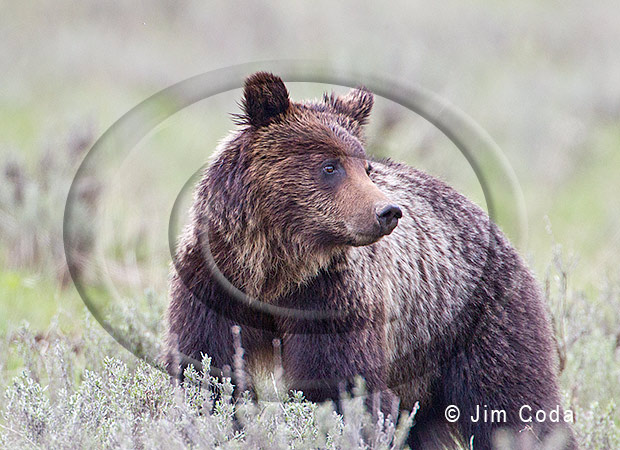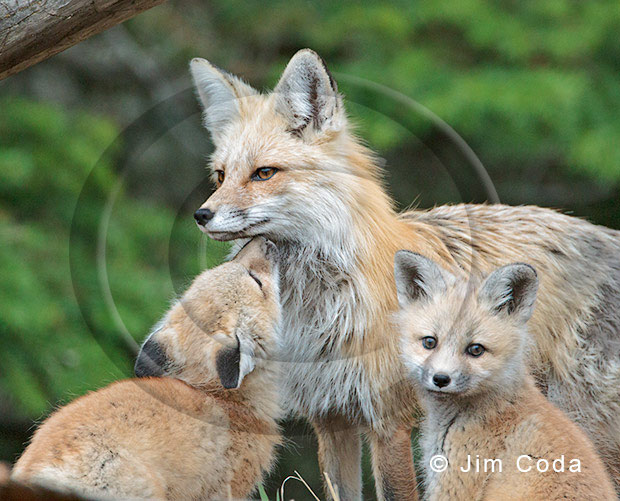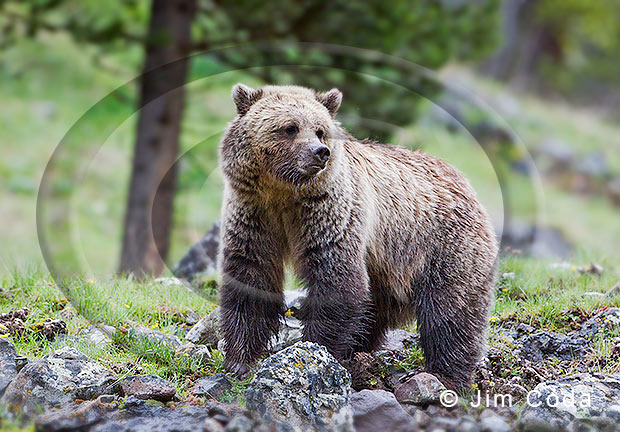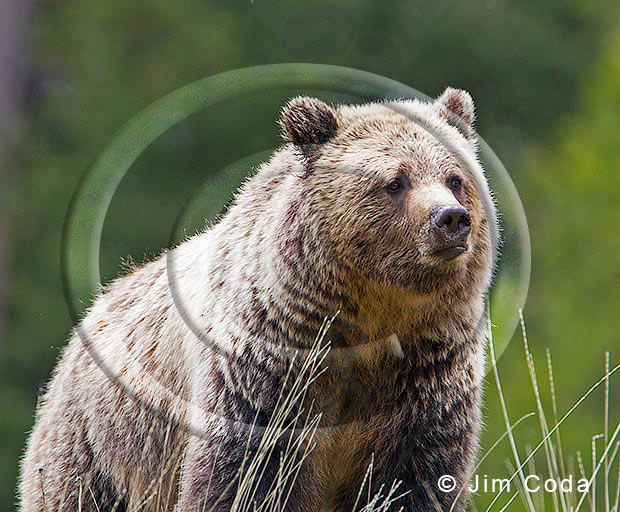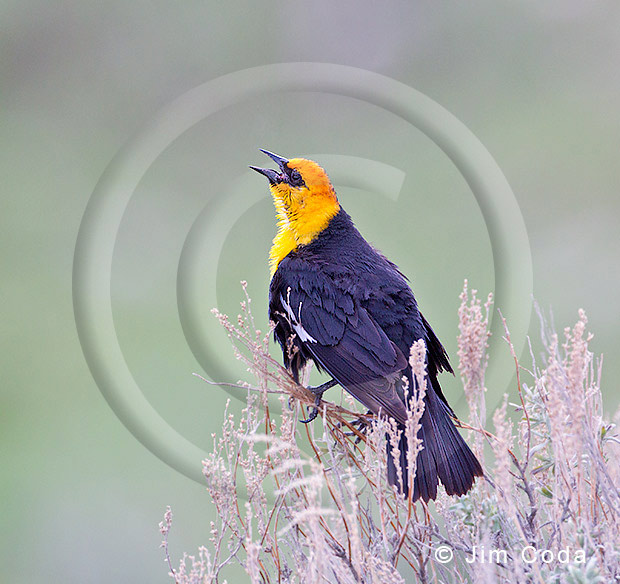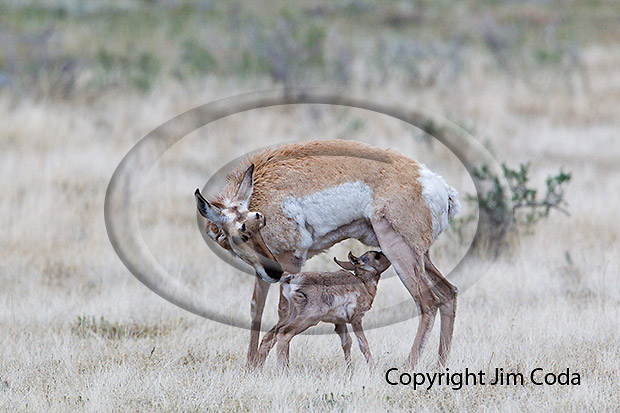Grizzly Bear, Yellowstone National Park

A well-known place in Yellowstone to look for grizzlies is a large open area called Swan Lake Flat. It is especially good for seeing grizzly sows with cubs. I have often seen grizzlies there, but they have always been too far away for good photos.
In May 2015 I got lucky. I was approaching the flat from the south when I saw a flash of brown out of the corner of my eye. I stopped and saw a mother grizzly with two two year old cubs walking parallel to the road about 75 yards away. Unfortunately, they were heading in the opposite direction. By the time I got the car turned around they had disappeared into some trees. I drove to a spot that looked like it would be a good place to wait for them and got ready.
As luck would have it, after a minute or two I noticed that there was a very young elk calf between me and where I hoped the bears would pass. It was standing in a little clump of trees. Hmm. Bears love elk calves. In fact, grizzlies and black bears kill about 50% of the calf crop each year. What if they see/smell the calf and charge toward it (and me)? That’s as far as I got in my thinking when the bears came into view. They didn’t detect the calf and kept going. The calf got to live another day and I got my photo.
